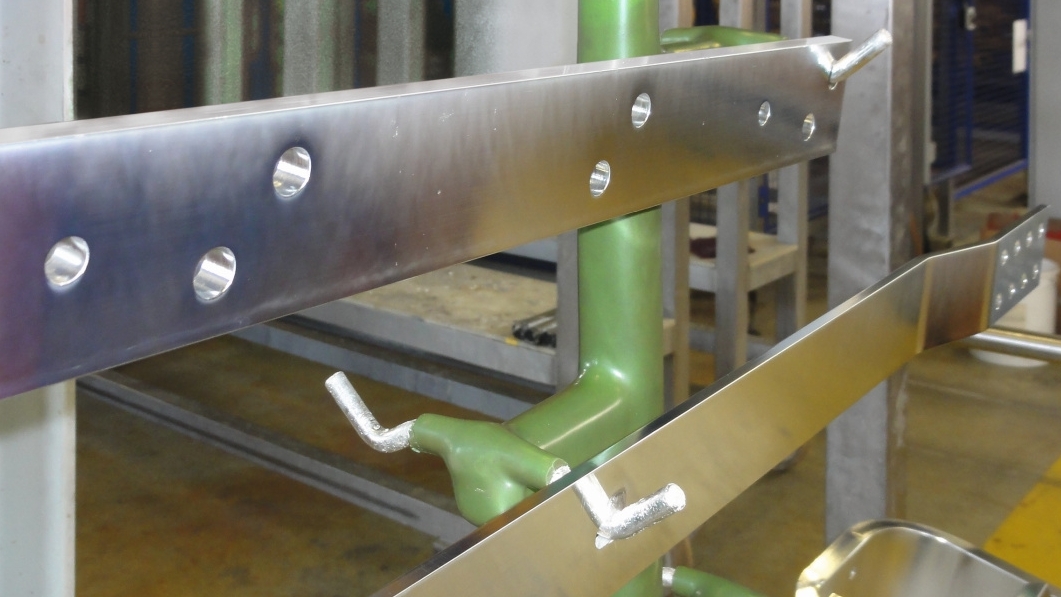Question: To deposit shiny tin layers, we use a sulphuric acid tin electrolyte on a rack system. The electrolyte is operated at room temperature with 20 g/L. The cathodic current density is 1.5 A/dm2. For some time now, we have noticed that the deposition, mainly in the low current density range, is becoming increasingly duller. To compensate for this, we have already increased the proportion of brightener, but this only brought a slight improvement. We also increased the current density, which improved the gloss in these areas, but caused slight burning at edges and tips in places. Tests with Hull cells, sheets and angle cathodes allowed this to be reproduced. In the lab we ran trials with a new approach which gave excellent results, allowing us to rule out a problem with the chemistry. In view of the costs, we would gladly do without a new batch of around 3000 liters. What possible causes can you name to help us find the cause of the problem?
 Sulphuric acid tin electrolytes are usually operated at 15-20 °C. As many problems only become visible at temperatures above 30 °C, some electroplating plants do not use cooling or use too little of it. Depending on the additive, some electrolyte types can react more sensitively to high temperatures over time. In addition, heat development is often underestimated, especially in baths with a larger volume. However, it is not the bath volume but the surface area per liter, the current density and the throughput that play a significant role here.
Sulphuric acid tin electrolytes are usually operated at 15-20 °C. As many problems only become visible at temperatures above 30 °C, some electroplating plants do not use cooling or use too little of it. Depending on the additive, some electrolyte types can react more sensitively to high temperatures over time. In addition, heat development is often underestimated, especially in baths with a larger volume. However, it is not the bath volume but the surface area per liter, the current density and the throughput that play a significant role here.
In your case, a temperature problem seems to play a subordinate role, otherwise the problem could not be easily reproduced in the laboratory.
Brighteners must always be dosed correctly - caution is advised
Matt deposition can be caused by a lack of brighteners. However, caution is required here. Even a small overdosage can lead to the formation of pores in the high current density range. With a very high content of brightener, this can lead to stepped deposition and/or dark rings around holes and/or complete inhibition of tin deposition.
If there is a deficiency, the optimum dosage can be determined using an angle cathode. However, the determined value should not be supplemented completely, but in two or three dosing cycles.
A lack of brighteners is often indicated by a veiled or milky, matt deposit over the entire current density range.
The lack of auxiliary brighteners is another possible cause of the effect you describe. This can also be easily checked and corrected with an angled cathode.
Chloride contamination: A major problem in the tin electrolyte
A major problem with sulphuric acid tin electrolytes is chloride contamination. This can be introduced during pre-treatment, for example by pickling or decapitation processes that contain hydrochloric acid instead of sulphuric acid. For this reason, chemicals containing chloride should not be used in corresponding tin systems.
However, it can still happen that hydrochloric acid is accidentally used when preparing or adding pickling agents. Another, albeit less likely, source for the introduction of chloride is contaminated rinsing water.
Up to approx. 300 mg/L, a correction of brightener can be carried out. This is usually done in small steps. Impurities of more than 300 mg/L can no longer be compensated for. In this case, a new batch or at least a partial batch is necessary.


